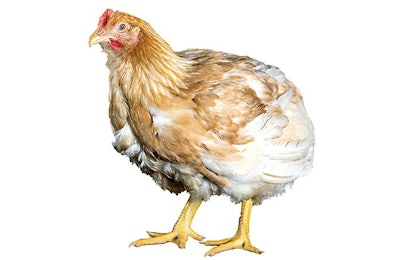
It’s here, but will it matter?
In early September 2020, a preliminary report on a much-anticipated University of Guelph study on broiler welfare was released. Among its conclusions is that fast-growing (the industry standard broiler) birds have poorer animal welfare outcomes than slower-growing birds.
In a press release on the report, the institution said the faster-growing birds are less active and mobile and had poorer foot health – which it said indicates poor welfare – than slower-growing birds.
This isn’t an unexpected outcome, but it is noteworthy because the study will likely be trumpeted by critics of animal agriculture as concrete, scientific evidence of what they call the inhumane practices of the broiler industry.
The customer is always right
I do not want to question the merits of the study’s methods or conclusions, but rather question how much of a difference it will make in the minds of the average American shopper and the decision makers at major chicken buyers.
Industry research consistently shows people want to buy a tasty, safe product for a good price and all other concerns – welfare, sustainability, antibiotics use, etc. – are secondary. With the COVID-19 pandemic continuing to cause economic, political and social upheaval in the United States, it seems to me that the welfare of the chicken on the table is not a major concern for consumers. I doubt a new study – that will likely receive little attention outside of animal agriculture circles – will change many minds right now.
If there was to be a switch to slower-growing genetics, I predict it would happen in the same way the domestic egg industry switched to cage-free: as the result of a focused, animal activist-driven pressure campaign on restaurant, retail and foodservice companies.
The University of Guelph report concluded the economic consequences of shifting to a slower-growing bird would be significant. Earlier research on this topic also found that integrators would be forced to charge more for chicken if they adopted a slower-growing bird as an industry standard.
Both consumers and chicken buyers do not want to pay a higher price for the same commodity. As my colleague Roy Graber noted in another blog post on this subject, the lack of consumer demand for cage-free eggs should give pause to decision makers dealing with activist pressure about slower-growing birds.
A mixed approach
I think what’s more likely is that the University of Guelph study will serve as further food for thought for breeders and integrators dealing with the increasingly prevalent issue of breast meat myopathies.
While the genetic progress toward fast and large breast meat growth on broilers yielded tremendous economic advances for the global poultry industry, it has also brought considerable difficulty in the form of breast meat myopathies like woody breast syndrome. Perhaps one way to deal with this problem – and provide a product for those who do want a slower growing bird – is for a percentage of the industry to convert to slower-growing genetics or maybe integrate some aspects of the slower-growing bird’s genetics into the mainstream production broiler’s lineage.
“We hope that results of our study will set the direction for the next phase of genetic changes leading to welfare improvements,” Tina Widowski an animal biosciences professor at the University of Guelph, and one of the lead authors of the study, said in the press release.
















